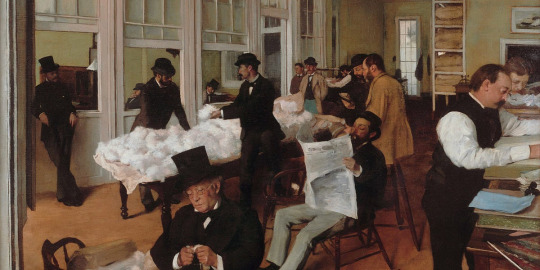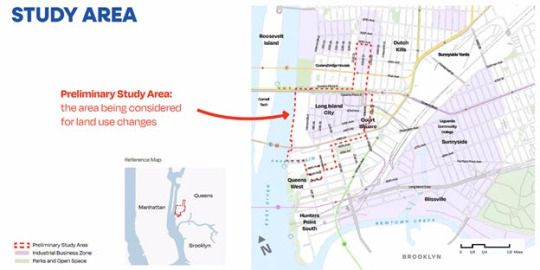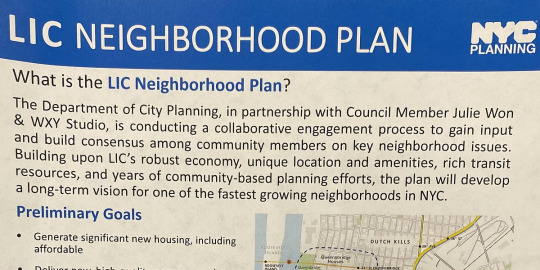Don't wanna be here? Send us removal request.
Text

DOT's Vision Zero Redesign for Queens Boulevard: Prioritizing Safety and Multi-Modal Access http://dlvr.it/T7zLcG
0 notes
Text

Community Board Guide to NYC's City of Yes for Housing Opportunity Plan http://dlvr.it/T6jrCB
0 notes
Text

Queens DA Katz Outlines Priorities: Public Safety, Conviction Integrity, and a Questionable Crackdown on Scooters http://dlvr.it/T57Hwg
0 notes
Text

OneLIC Round 2: Residential development in the LIC IBZ http://dlvr.it/T25NJD
0 notes
Text

Impressionism, Inc.: An Examination of the Impressionists’ Société Anonyme http://dlvr.it/T017Dh
0 notes
Text

HPD's Vision for Hunter's Point South Parcel E http://dlvr.it/Szv3BY
0 notes
Text

One LIC Focus Area Meeting Round 1: Housing http://dlvr.it/Szs5vz
0 notes
Text

The Future of Hunters Point South Ferry Landing http://dlvr.it/SyTHLH
0 notes
Text

Exploring the Proposed Long Island City Business Improvement District Expansion: A Community Meeting Recap http://dlvr.it/Swhwhp
0 notes
Text

Four things of note in tonight's CB2 meeting (September 2023) http://dlvr.it/SvngkW
0 notes
Text

Queens Community Board Statement of Interest http://dlvr.it/Slp8pf
0 notes
Text

How the LIC Courthouse intertwines with the creation of New York City http://dlvr.it/SjrK2s
0 notes
Text

"The Crucible of New York": Frank Lloyd Wright's journey to becoming an iconic architect http://dlvr.it/Sjnbvq
0 notes
Text
Lochner and the Freedom of Contract
One of the theoretical underpinnings of laissez-faire capitalism is the freedom of contract, the idea that individuals and groups should be free to enter into any mutually agreed upon contract without interference from the government. Scottish philosopher Adam Smith, who laid the groundwork for free market economic theory, wrote in his 1776 classic The Wealth of Nations about what he considered to be the “sacred and inviolable” freedom of contract. “The patrimony of a poor man lies in the strength and dexterity of his hands; and to hinder him from employing this strength and dexterity in what manner he thinks proper, without injury to his neighbour, is a plain violation of this most sacred property. It is a manifest encroachment upon the just liberty, both of the workman, and of those who might be disposed to employ him” (Smith).
Early twentieth century American jurisprudence took a similar approach as Smith, enshrining the freedom of contract between employees and employers into law with Lochner v. New York in 1905 and striking down any major attempts to govern “this most sacred property.” America by the turn of the twentieth century had witnessed the rise of industrial capitalism, which led to a transformed labor relationship and new attempts at worker exploitation. It also led to a rise in unionization efforts and collective worker actions.
It was in this political climate that New York State passed a labor law limiting the working hours for employees of bakeries to a maximum of 60 hours per week or 10 hours per day. Employer Joseph Lochner argued that the freedom of contract protected by the Fourteenth Amendment to the United States Constitution rendered the state law illegal. The United States Supreme Court agreed, hearkening back to Smith’s defense of the freedom of contract, employed the same concept of “liberty.” The Court had already decided a few years earlier in Allgeyer v. Louisiana that “the general right to make a contract in relation to his business is part of the liberty of the individual protected by the Fourteenth Amendment of the Federal Constitution.” In Lochner v. New York, the Court decided that “there is no reasonable ground for interfering with the liberty of person or the right of free contract by determining the hours of labor in the occupation of a baker.”
Reasonable grounds to use the state’s “police powers” to limit the freedom of contract would have included laws that “relate to the safety, health, morals and general welfare of the public.” However, because “the trade of a baker has never been regarded as an unhealthy one,” the Court found that “the act is not, within any fair meaning of the term, a health law, but is an illegal interference with the rights of individuals, both employers and employees, to make contracts regarding labor upon such terms as they may think best.” The question before the Court in Lochner v. New York was, in its own words, “which of two powers or rights shall prevail,—the power of the state to legislate or the right of the individual to liberty of person and freedom of contract.” The Court sided with the freedom of contract and struck down the New York State law limiting bakery employee working hours.
Associate Justice Oliver Wendell Holmes Jr. dissented, striking at the heart of the freedom of contract and Smith’s economic theory. “A constitution is not intended to embody a particular economic theory, whether of paternalism and the organic relation of the citizen to the State or of laissez faire,” he wrote. Associate Justice John Marshall Harlan also dissented, arguing that “this statute was enacted in order to protect the physical wellbeing” of bakery employees. He also argued that the Court’s decision in Lochner v. New York would be “enlarging the scope of the [Fourteenth] Amendment far beyond its original purpose” (Lochner v. New York).
Indeed, this enlargement of scope would usher in a decades-long period known as the Lochner era, a period in which the Court broadly interpreted the due process clause of the Fourteenth Amendment to strike over 200 federal and state labor laws. One analysis found that, “during the forty years comprising the Lochnerera, the Court used substantive due process to strike down government action an average of about five times a year” (Phillips).The Supreme Court was “effectively arguing that if a worker took a job, that worker agreed to whatever the employer offered and the government should not intervene in that sacrosanct arrangement,” historian Erik Loomis wrote in A History of America in Ten Strikes(Loomis p. 83).
Organized labor leaders criticized and fought against the Court’s overreach in the Lochner era. “In the depths of the Great Depression, workers transformed their lives through a combination of their organizing and electing politicians to office who would change the attitude of the state toward unions,” Loomis wrote (Loomis pp. 113-119). These decades saw a series of worker strikes and strike waves, including the 1912 Lawrence textile strike, the Seattle General Strike of 1919, and the 1936-1937 Flint sit-down strike – the last occurring during the severe industrial slump of the Great Depression.
It was a series of strikes during the Great Depression in 1934 (including the Auto-Lite strike, West Coast waterfront strike, Minneapolis general strike, and the textile workers strike) that compelled President Franklin D. Roosevelt’s federal government to pass the National Labor Relations Act (also known as the Wagner Act) the following year. The NLRA undermined the freedom to contract of the Lochner era by promoting union organizing and collective bargaining, as well as by creating the National Labor Relations Board to manage relations between employees and employers.
It wasn’t until West Coast Hotel Co. v. Parrish in 1937 that the Supreme Court allowed for more regulation of the labor contract by upholding a minimum wage law for women, finally bringing the Lochner era to a close. In West Coast Hotel, the Court struck at the core of the idea of the freedom of contract, writing, “The violation alleged by those attacking minimum wage regulation for women is deprivation of freedom of contract. What is this freedom? The Constitution does not speak of freedom of contract.” The Court wrote that the Constitution instead “requires the protection of law against the evils which menace the health, safety, morals and welfare of the people” (West Coast Hotel Co. v. Parrish). For this reason, it is sometimes necessary to curtail liberty and to enact restrictions on the freedom of contract, including restrictions related to the minimum wage. The Court’s decision echoed Harlan’s Lochner dissent decades earlier, in which he argued, “I take it to be firmly established that what is called the liberty of contract may, within certain limits, be subjected to regulations designed and calculated to promote the general welfare or to guard the public health, the public morals or the public safety” (Lochner v. New York).
The Court’s decision in West Coast Hoteltook the point of public health even further, holding that “this established principle is peculiarly applicable in relation to the employment of women, in whose protection the State has a special interest.” The Court asked rhetorically, “What can be closer to the public interest than the health of women and their protection from unscrupulous and overreaching employers?” It also cited the 1908 case Muller v. Oregon, which limited the number of hours women could work and “emphasized the consideration that ‘woman's physical structure and the performance of maternal functions place her at a disadvantage in the struggle for subsistence,’ and that her physical wellbeing ‘becomes an object of public interest and care in order to preserve the strength and vigor of the race.’” Loomis wrote that, in cases such as Muller, “Progressives saw women as not only exploited workers but also mothers responsible for raising the next generation of Americans. They argued that the state had a unique interest in excepting women from the freedom of contract ideology of Lochner and the Gilded Age Courts.” With cases like Muller, “creating any exception to Lochner opened up the court to more exceptions” (Loomis p. 84). With West Coast Hotel, the minimum wage statute for women was upheld, and the notion of a freedom of contract was weakened for all workers and employers.
A century later, the Lochner era is today considered by many legal theorists to be “one of the Supreme Court’s darkest eras” – with the decision “in a Malebolge of rejected rulings,” along with the infamous 1896 Plessy v. Ferguson(Beutler). But the Lochner decision and its underlying idea of freedom of contract continue to draw support from some modern conservative and libertarian legal thinkers, who “condemn Lochner for improper ‘judicial activism’” and “increasingly argue that in completely abandoning Lochner, the Court has left important economic rights vulnerable to government overreaching,” according to legal scholar David Bernstein (Bernstein). These libertarians are trying to rehabilitate the Lochner decision and “argue that the Constitution exists to secure inalienable property and contract rights for individuals.” West Coast Hotel may have effectively overturned Lochner, but the Lochner idea of freedom of contract is still alive.
References
Bernstein, D. E. (2005). Lochner v. New York: A Centennial Retrospective. Washington University Law Review, 83(5). https://core.ac.uk/download/pdf/233178567.pdf.
Beutler, B. (n.d.). The Rehabilitationists. The New Republic. https://newrepublic.com/article/122645/rehabilitationists-libertarian-movement-undo-new-deal.
Klare, K. E. (1978). Judicial deradicalization of the Wagner Act and the origins of modern legal consciousness, 1937-1941. School of Law Faculty Publications. https://legalform.files.wordpress.com/2017/08/klare-judicial-deradicalization-of-the-wagner-act-and-the-origins-of-mo.pdf.
Lochner v. New York, 198 U.S. 45 (1905). Justia Law. (n.d.). https://supreme.justia.com/cases/federal/us/198/45/.
Loomis, E. (2020). A History of America in Ten Strikes. The New Press.
Phillips, M. J. (1997). How Many Times Was Lochner-Era Substantive Due Process Effective? Mercer Law Review, 48(3). https://digitalcommons.law.mercer.edu/cgi/viewcontent.cgi?article=1597&context=jour_mlr.
Smith, A. (2009). An Inquiry into the Nature and Causes of the Wealth of Nations. Project Gutenberg. https://www.gutenberg.org/files/3300/3300-h/3300-h.htm.
West Coast Hotel Co. v. Parrish. Justia Law. (n.d.). https://supreme.justia.com/cases/federal/us/300/379/.
0 notes


